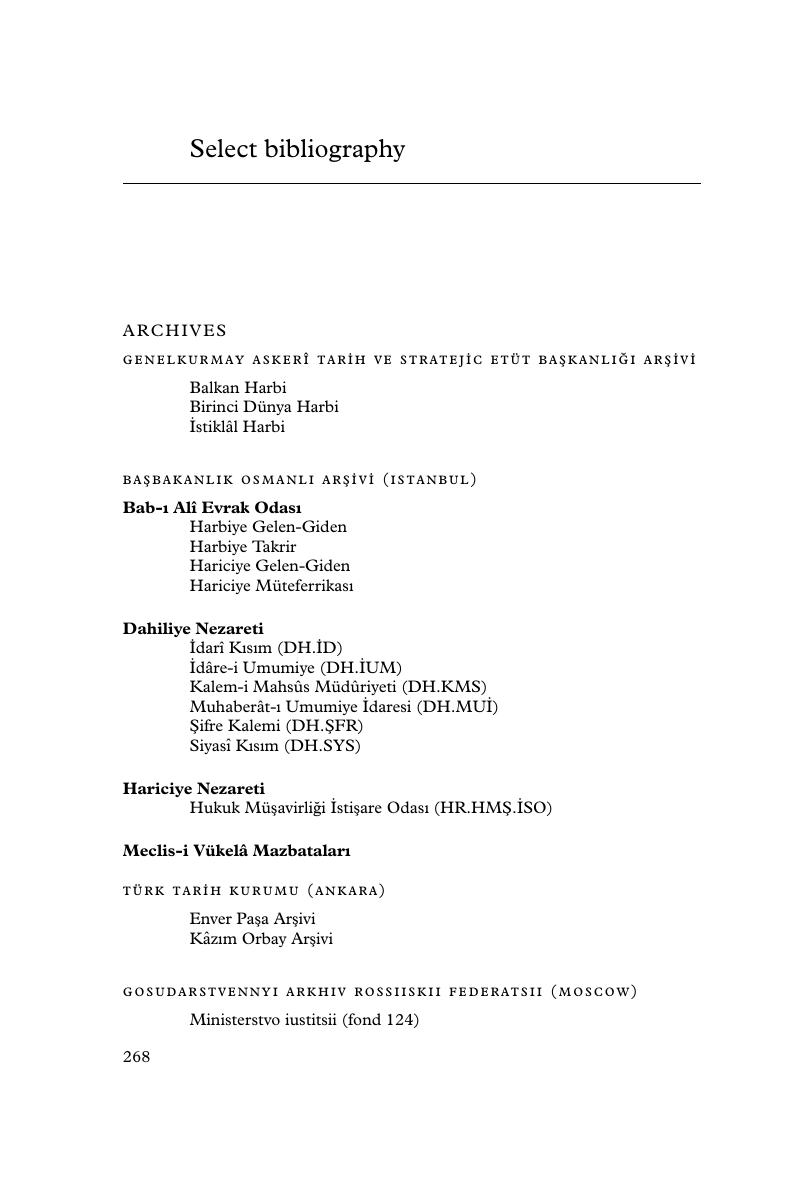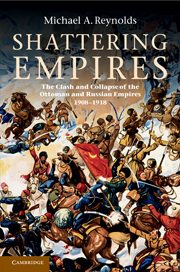Book contents
- Frontmatter
- Contents
- List of plates
- List of maps
- Note on transliteration and usage
- Acknowledgments
- List of abbreviations
- 1 Dismemberment of the Ottoman empire, 1878–1913
- 2 Eastern Anatolia and the Caucasus, 1914
- 3 Partition plans for Anatolia, 1915–1917
- 4 Borders in the Caucasus, 1918
- 5 The Turkish Republic and the Soviet Union, 1923
- Introduction
- 1 The high politics of anarchy and competition
- 2 Troubles in Anatolia: imperial insecurities and the transformation of borderland politics
- 3 Visions of vulnerability: the politics of Muslims, revolutionaries, and defectors
- 4 Out of the pan and into the fire: empires at war
- 5 Remastering Anatolia, rending nations, rending empires
- 6 Brest-Litovsk and the opening of the Caucasus
- 7 Forced to be free: the geopolitics of independence in the Transcaucasus
- 8 Racing against time
- Epilogue
- Select bibliography
- Index
- Plate section
- References
Select bibliography
Published online by Cambridge University Press: 05 June 2012
- Frontmatter
- Contents
- List of plates
- List of maps
- Note on transliteration and usage
- Acknowledgments
- List of abbreviations
- 1 Dismemberment of the Ottoman empire, 1878–1913
- 2 Eastern Anatolia and the Caucasus, 1914
- 3 Partition plans for Anatolia, 1915–1917
- 4 Borders in the Caucasus, 1918
- 5 The Turkish Republic and the Soviet Union, 1923
- Introduction
- 1 The high politics of anarchy and competition
- 2 Troubles in Anatolia: imperial insecurities and the transformation of borderland politics
- 3 Visions of vulnerability: the politics of Muslims, revolutionaries, and defectors
- 4 Out of the pan and into the fire: empires at war
- 5 Remastering Anatolia, rending nations, rending empires
- 6 Brest-Litovsk and the opening of the Caucasus
- 7 Forced to be free: the geopolitics of independence in the Transcaucasus
- 8 Racing against time
- Epilogue
- Select bibliography
- Index
- Plate section
- References
Summary

Information
- Type
- Chapter
- Information
- Shattering EmpiresThe Clash and Collapse of the Ottoman and Russian Empires 1908–1918, pp. 268 - 292Publisher: Cambridge University PressPrint publication year: 2011
